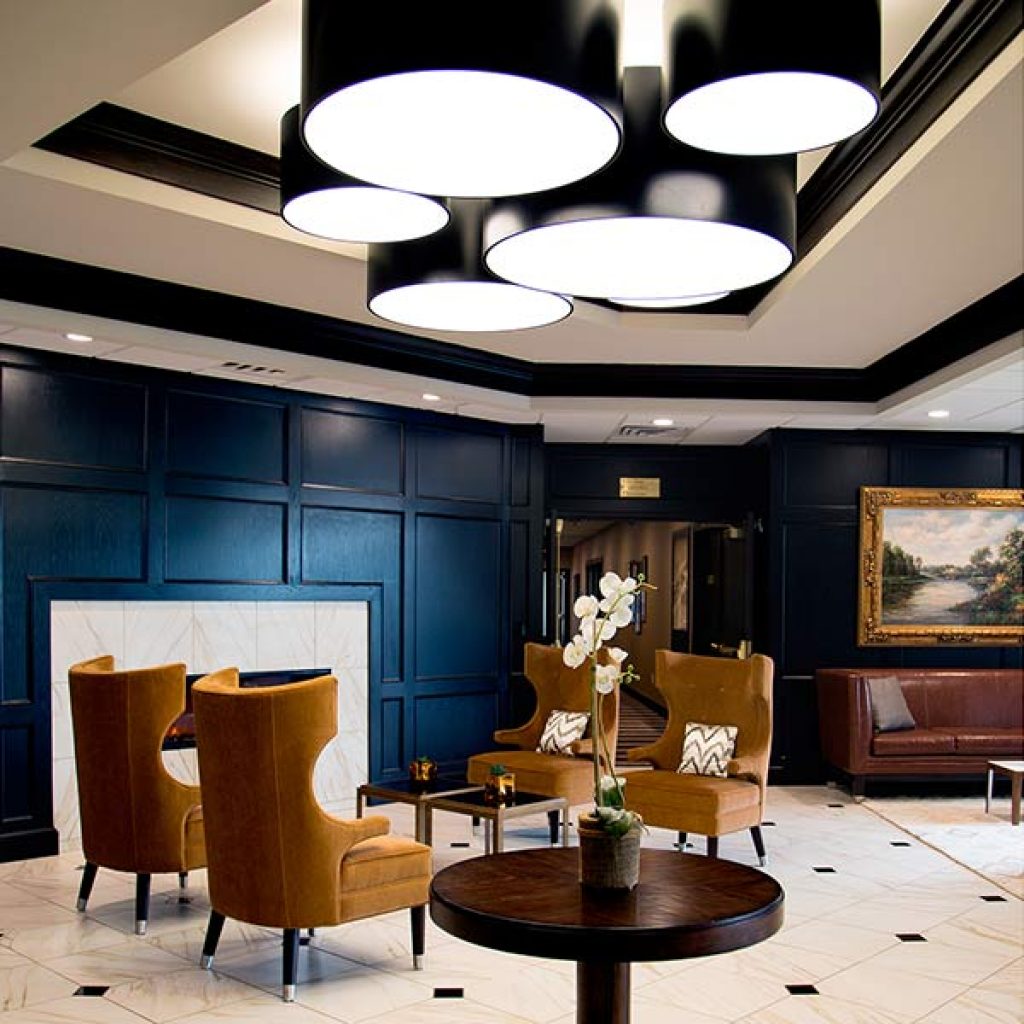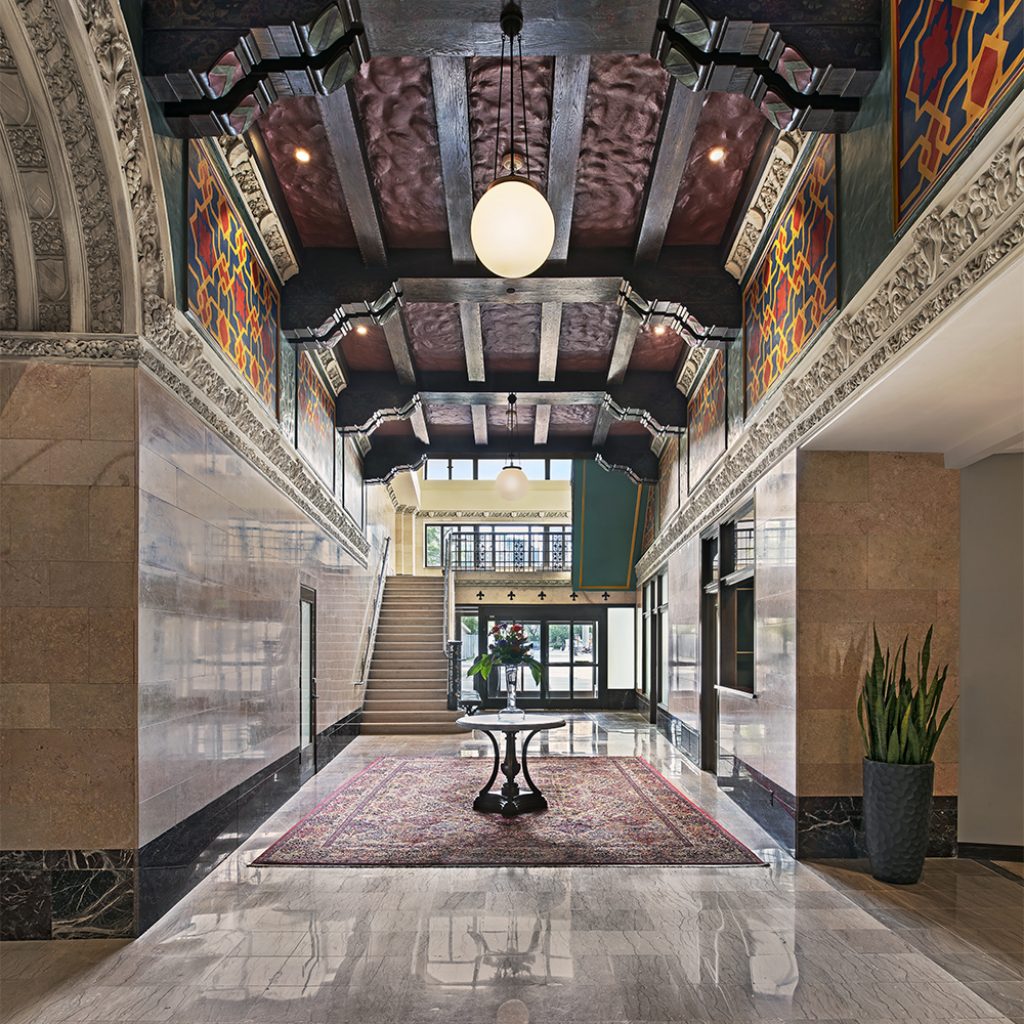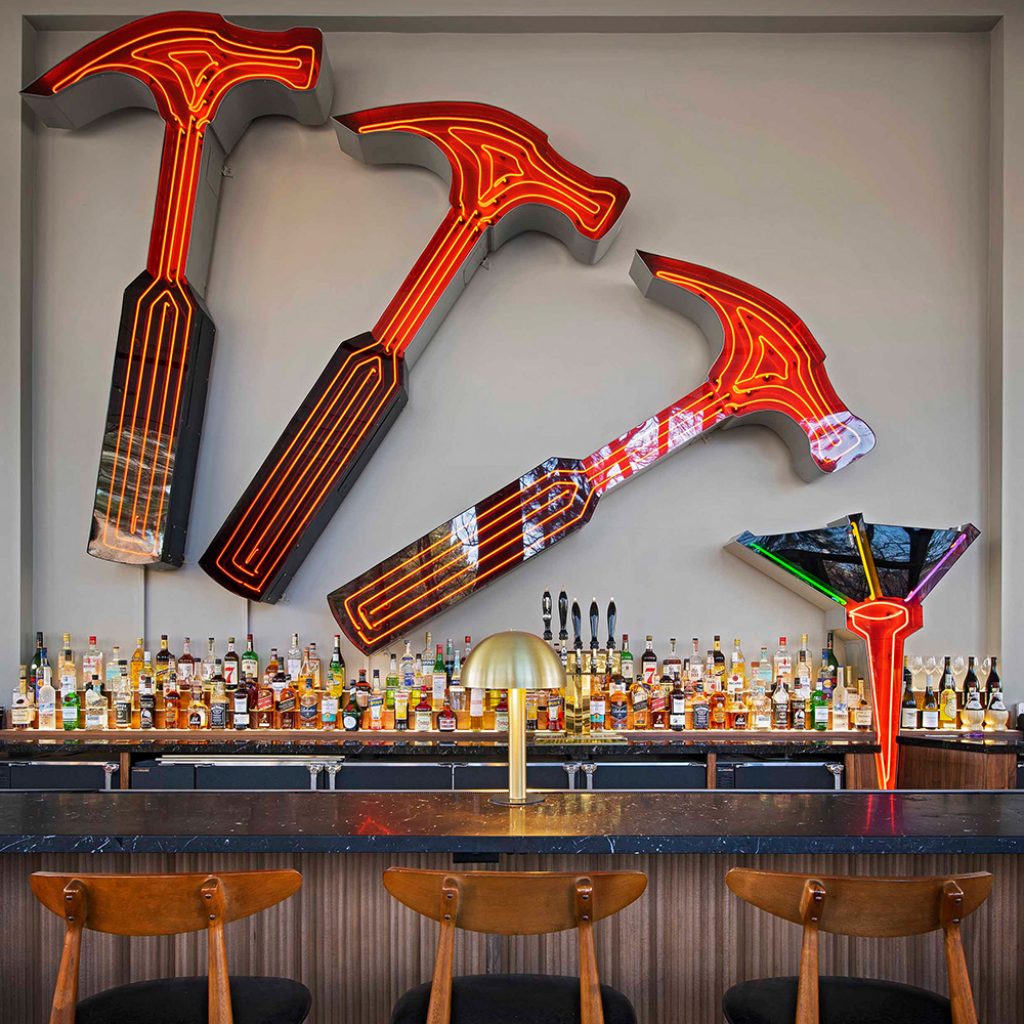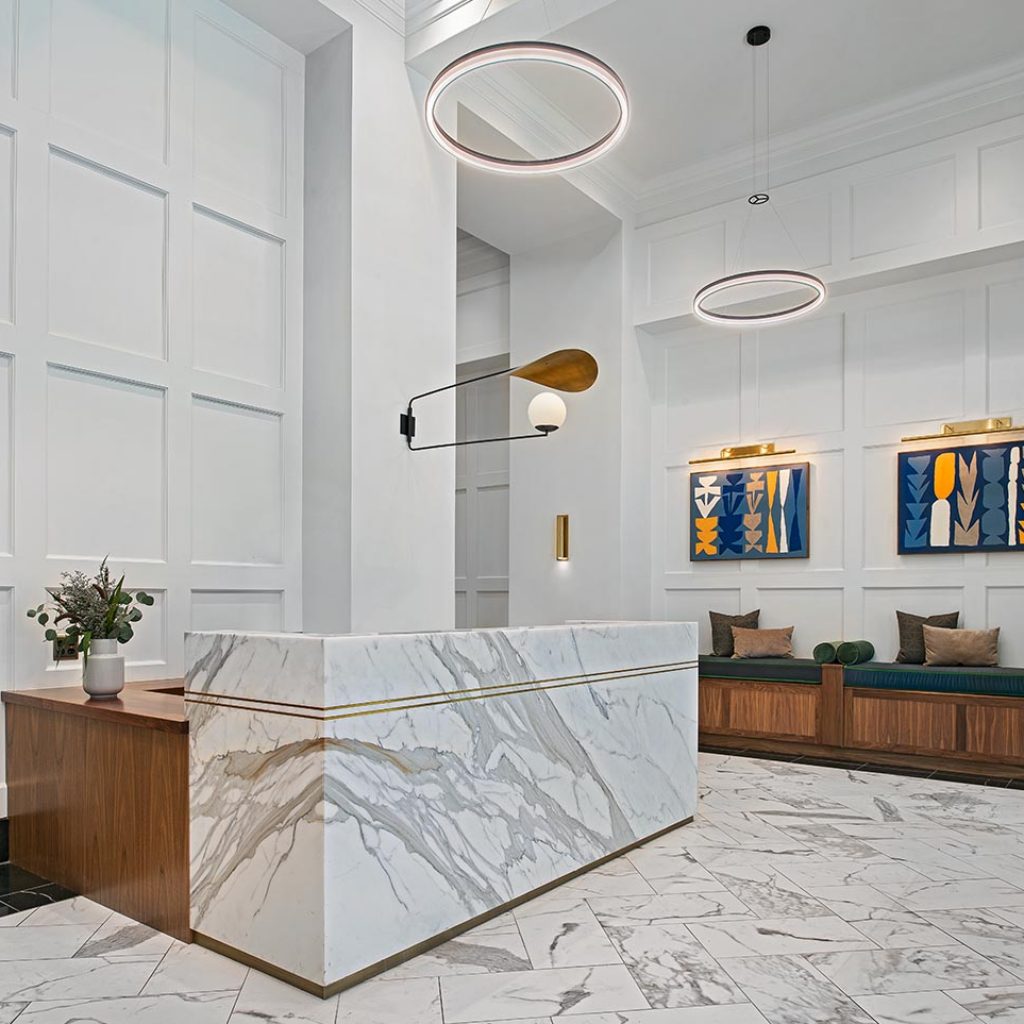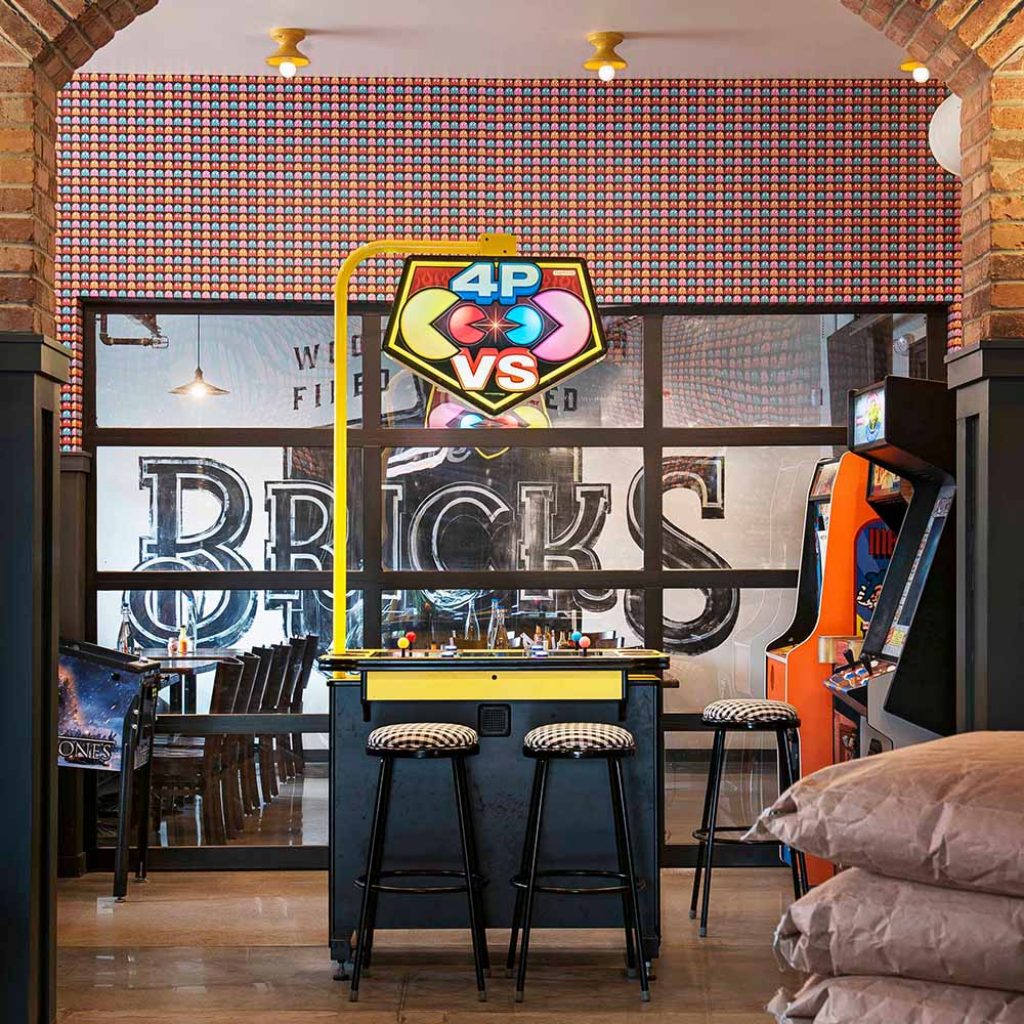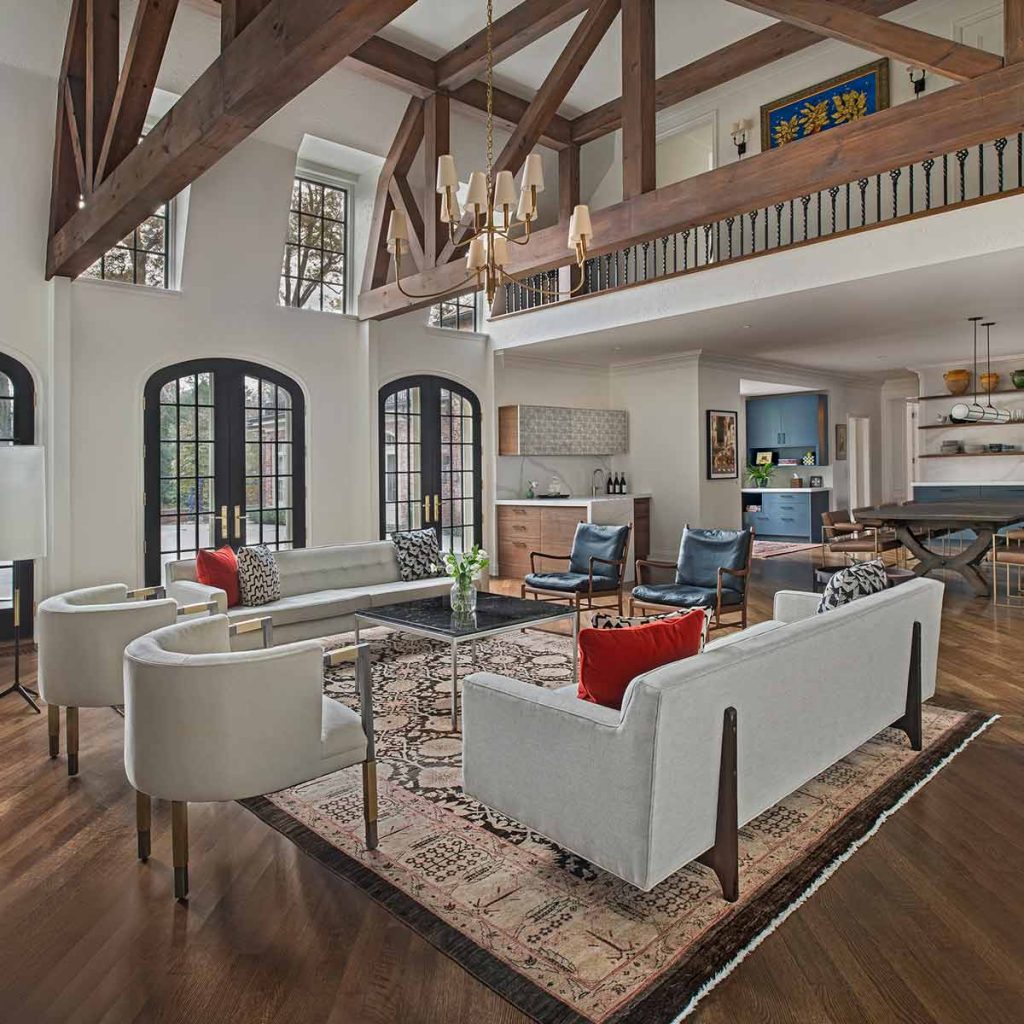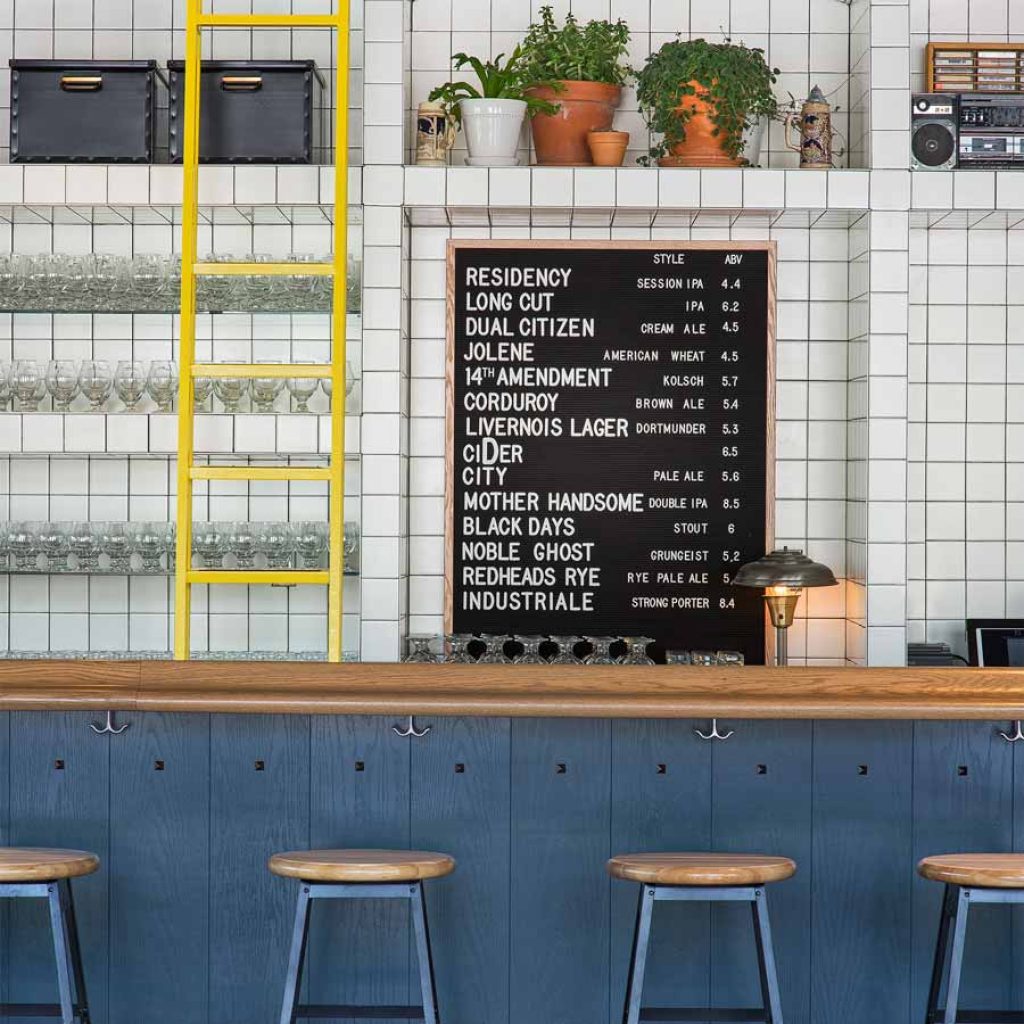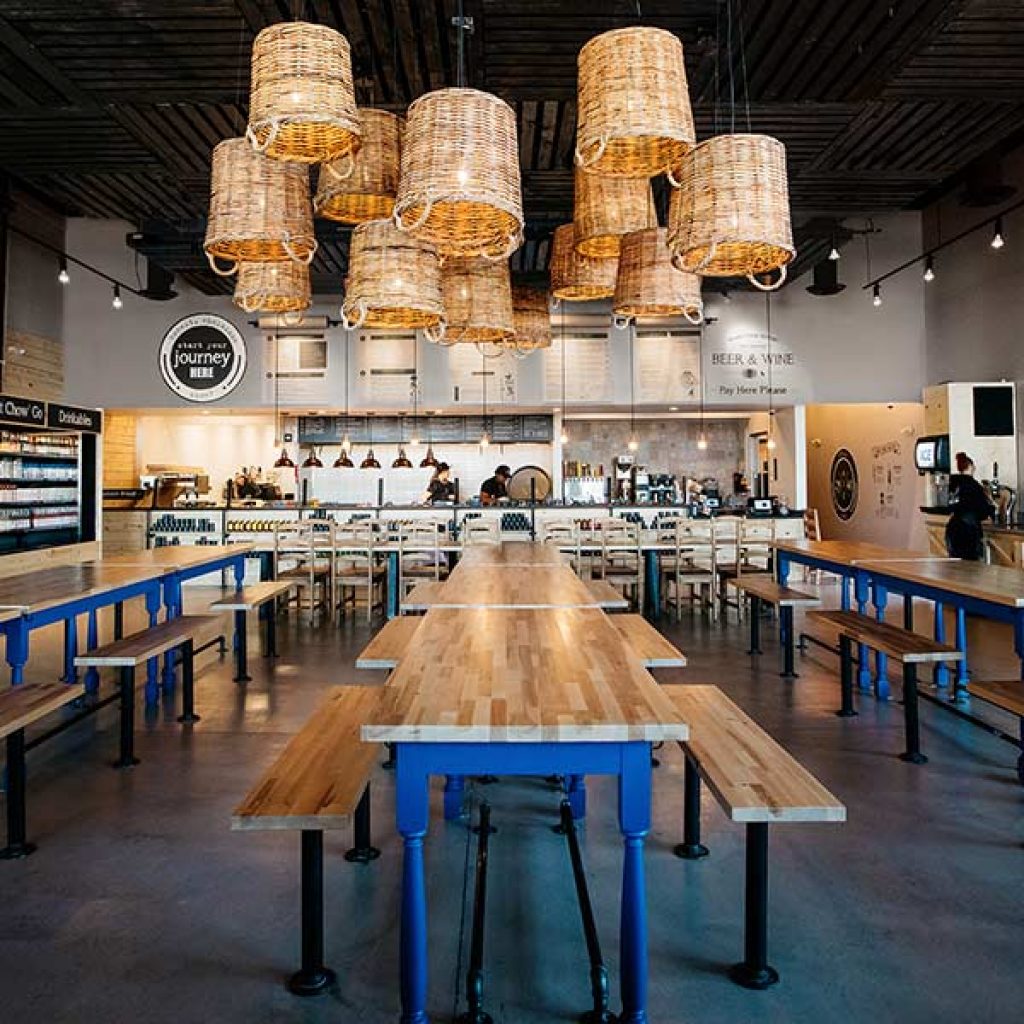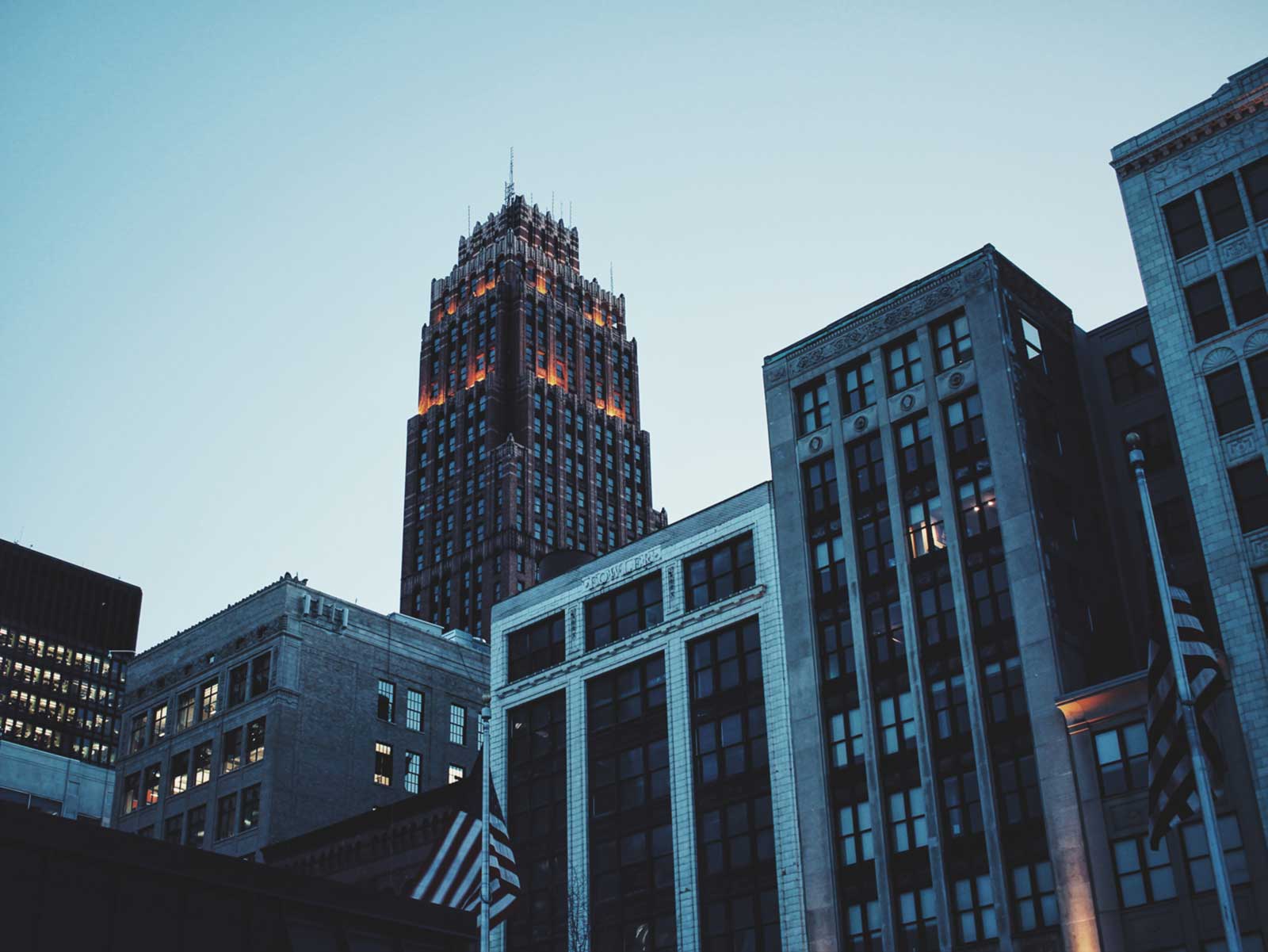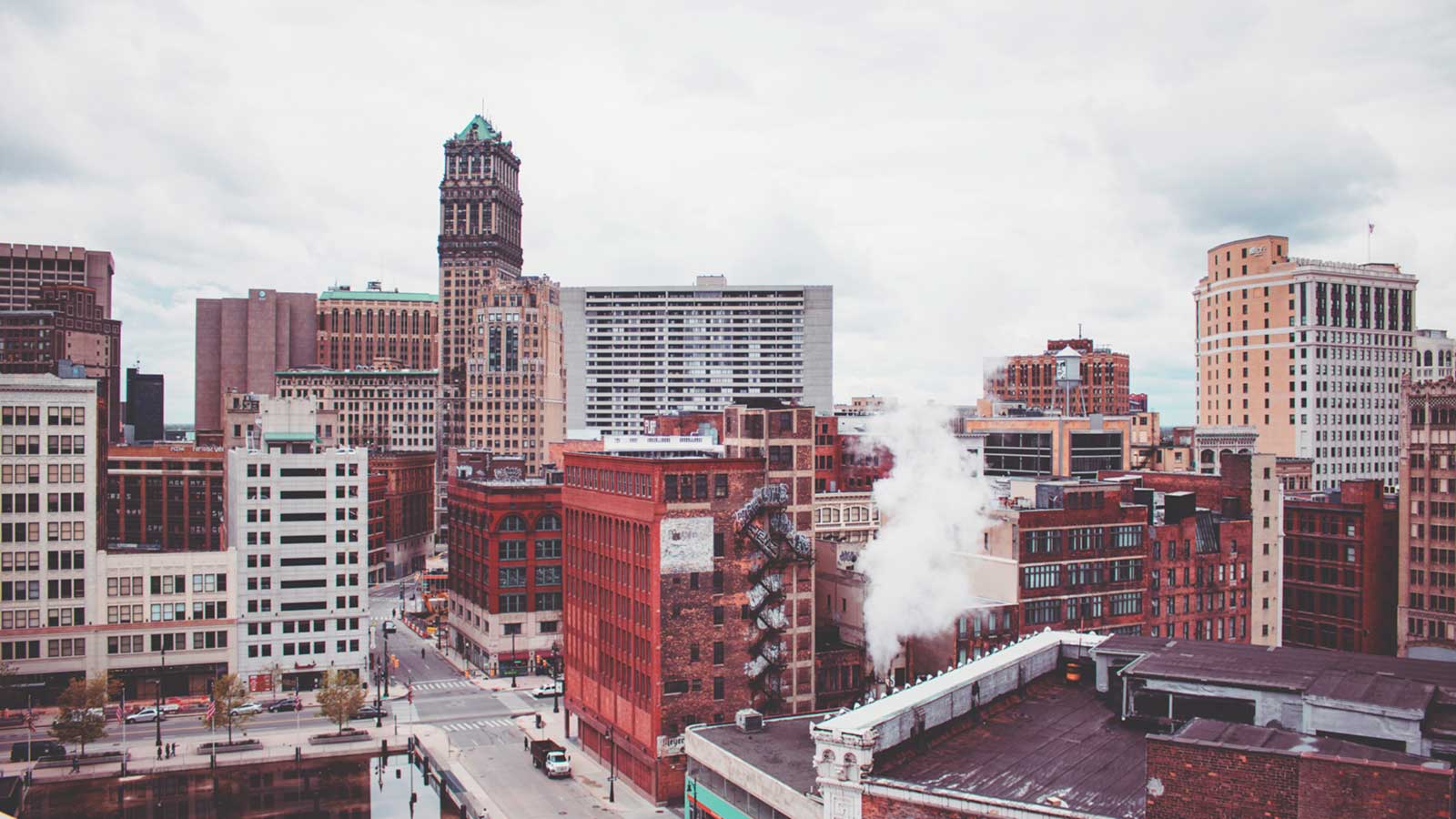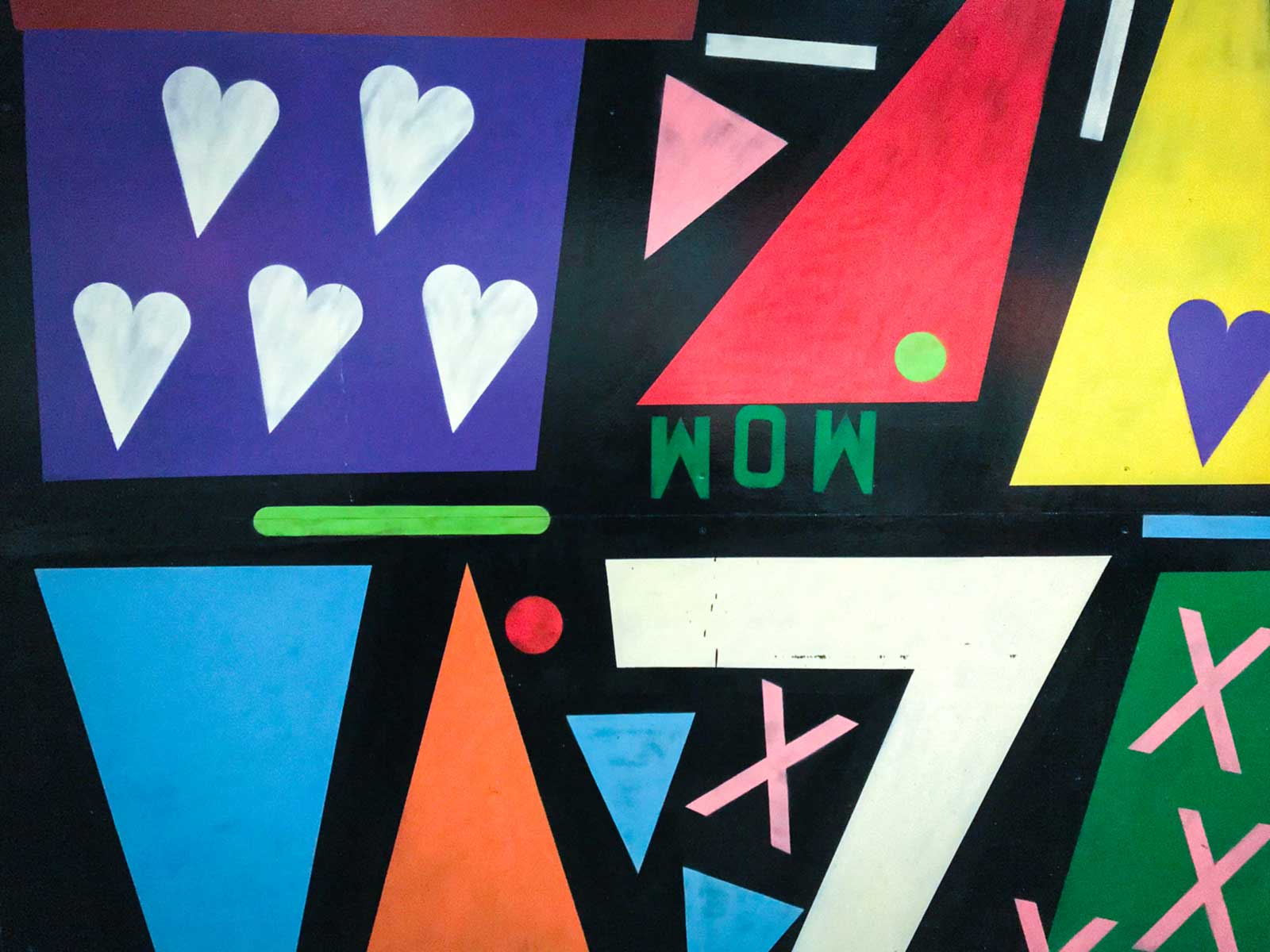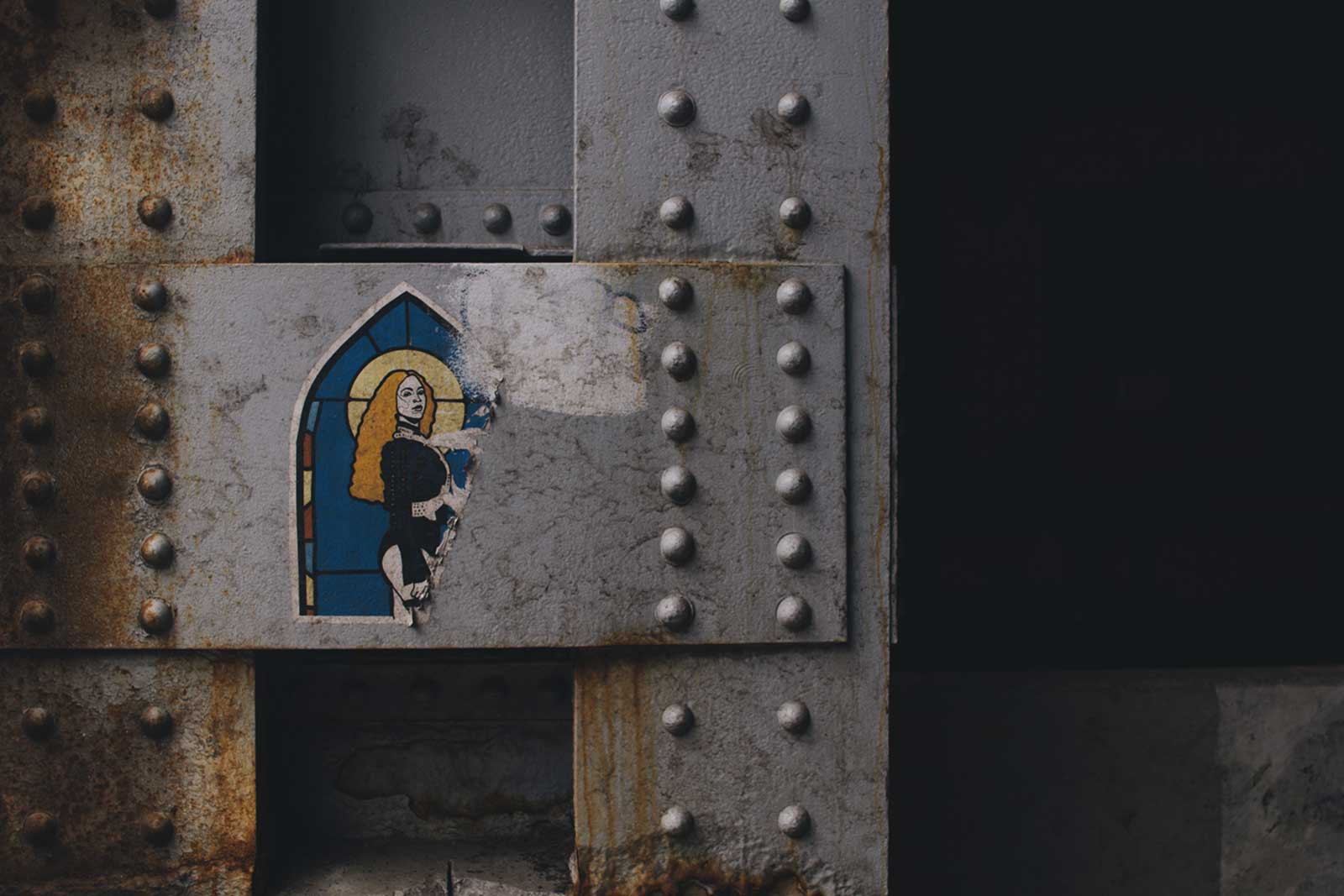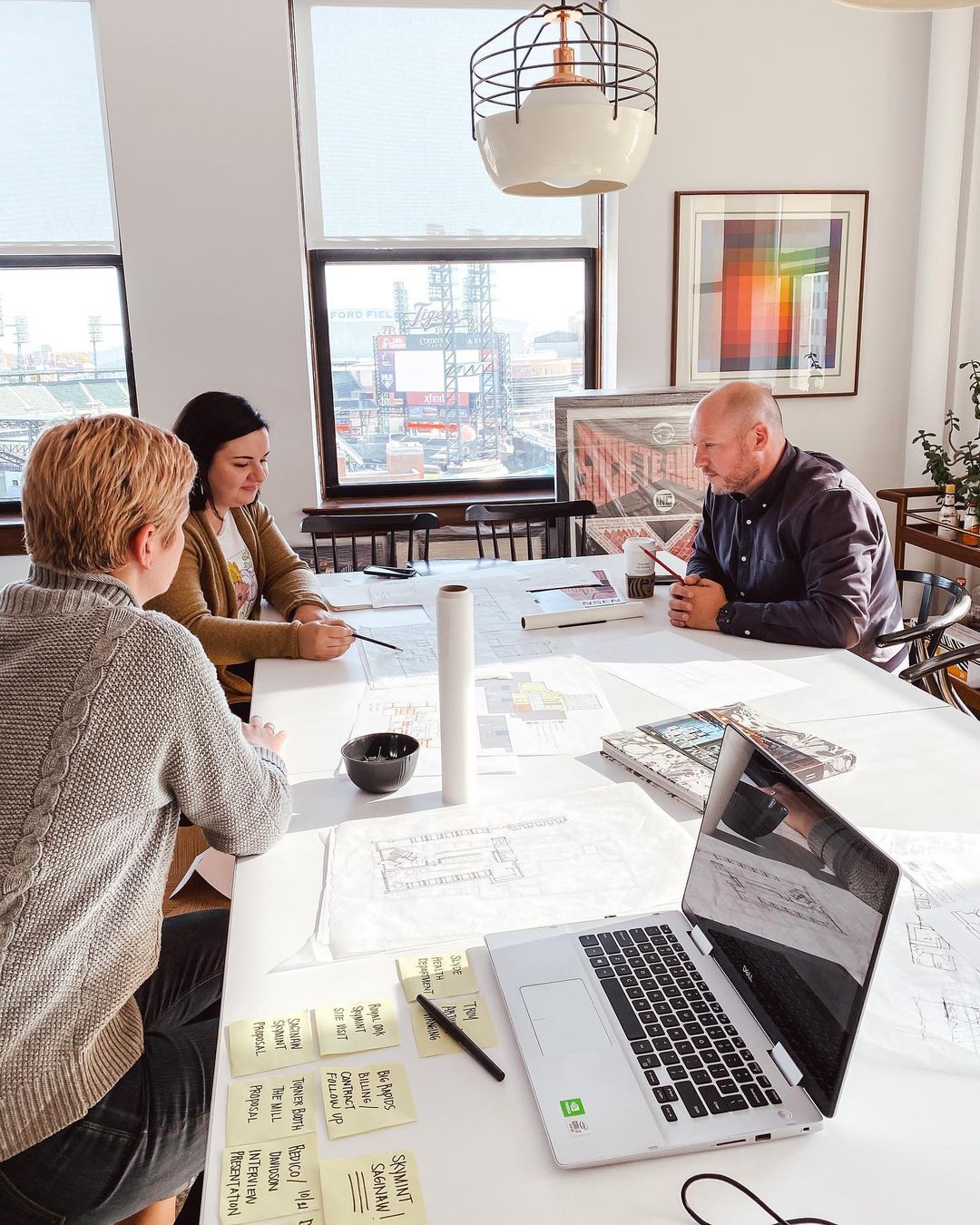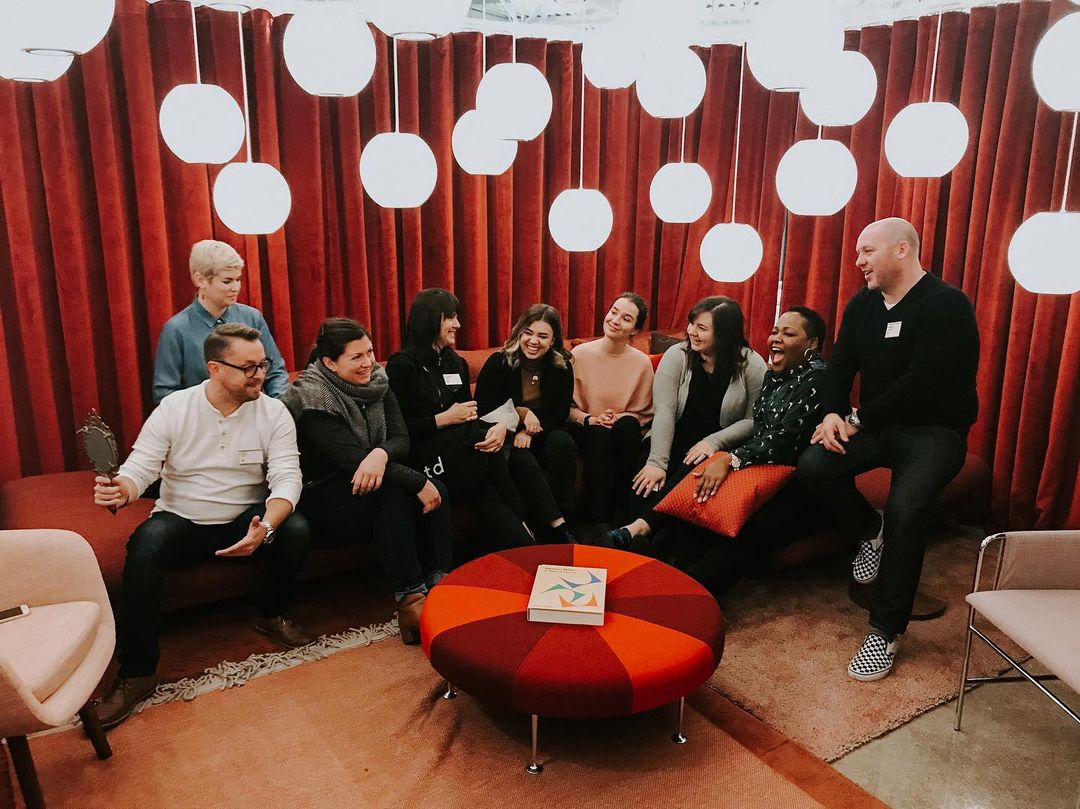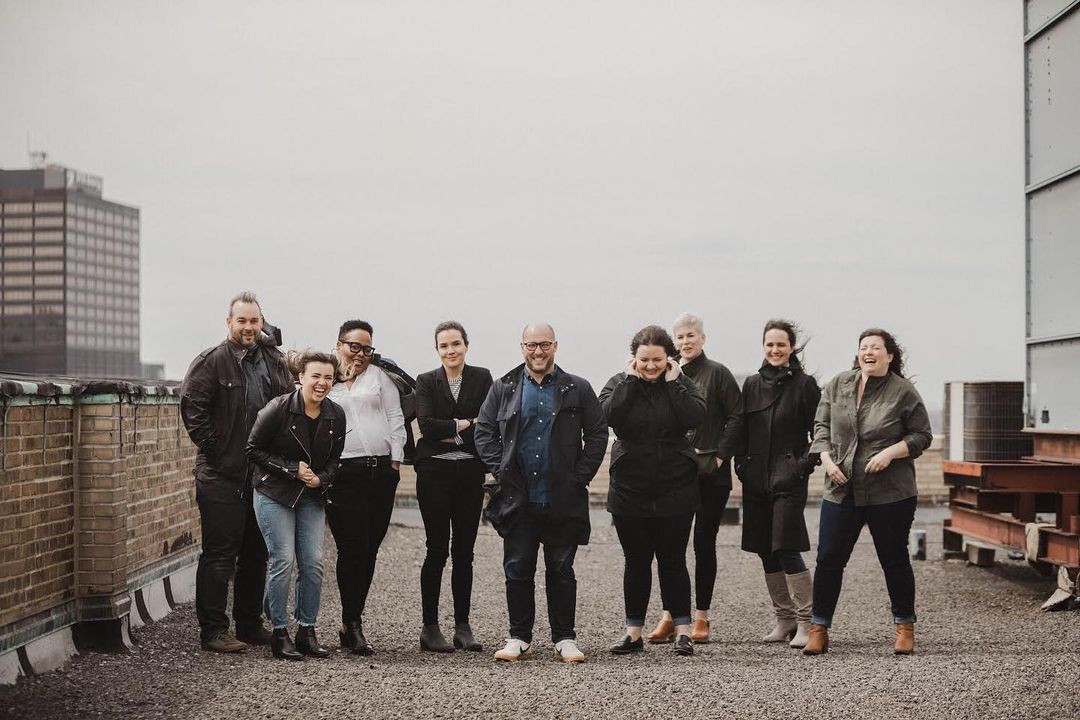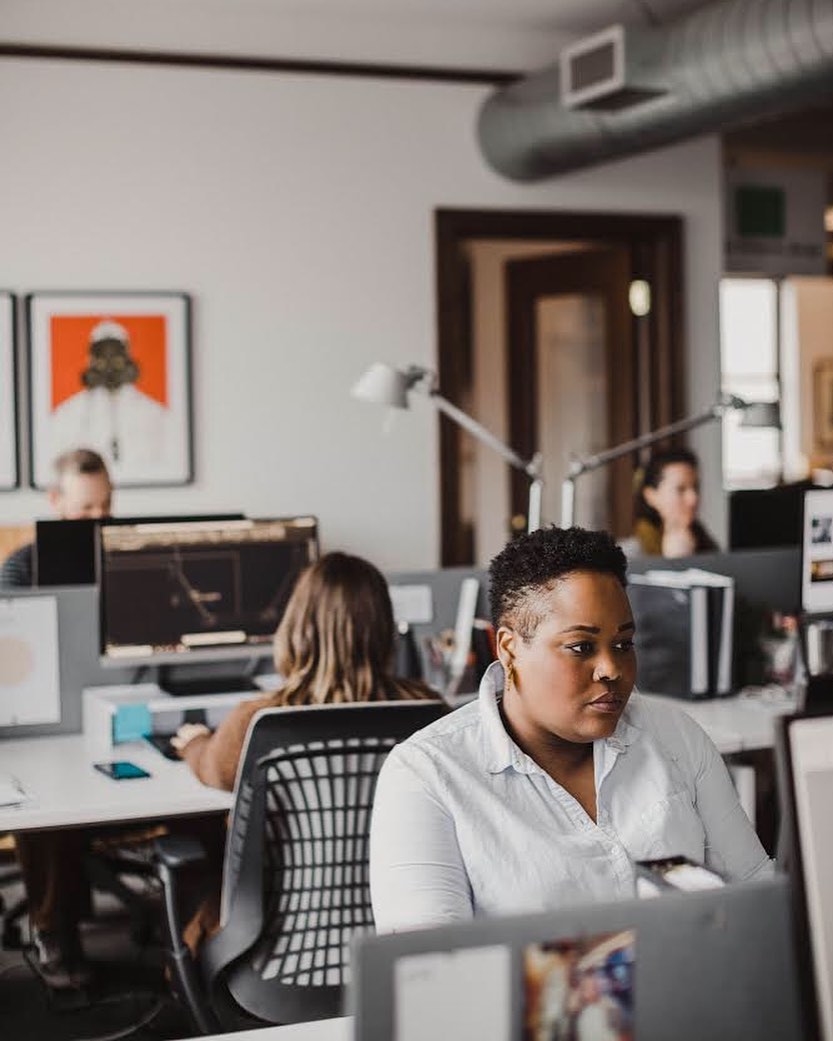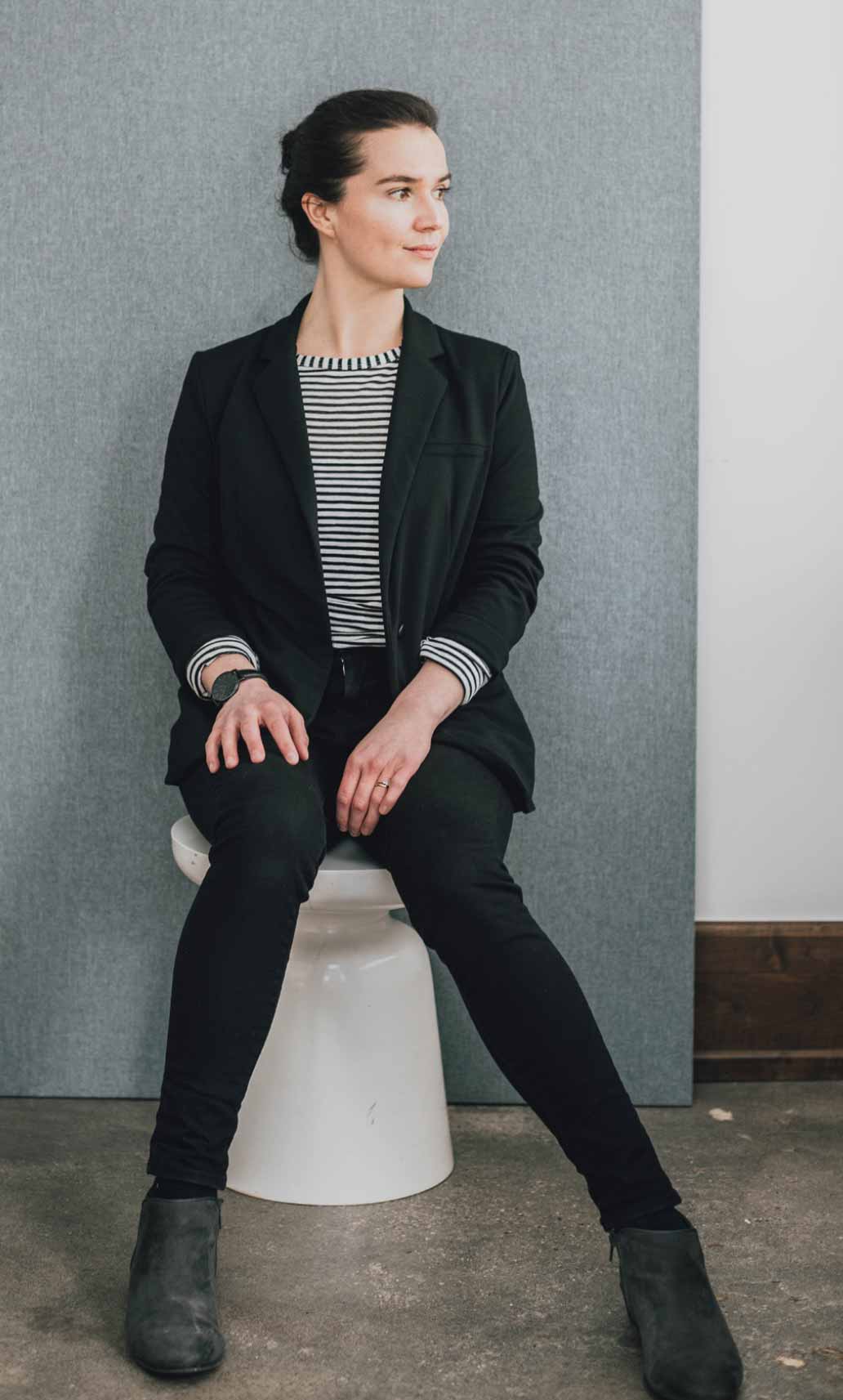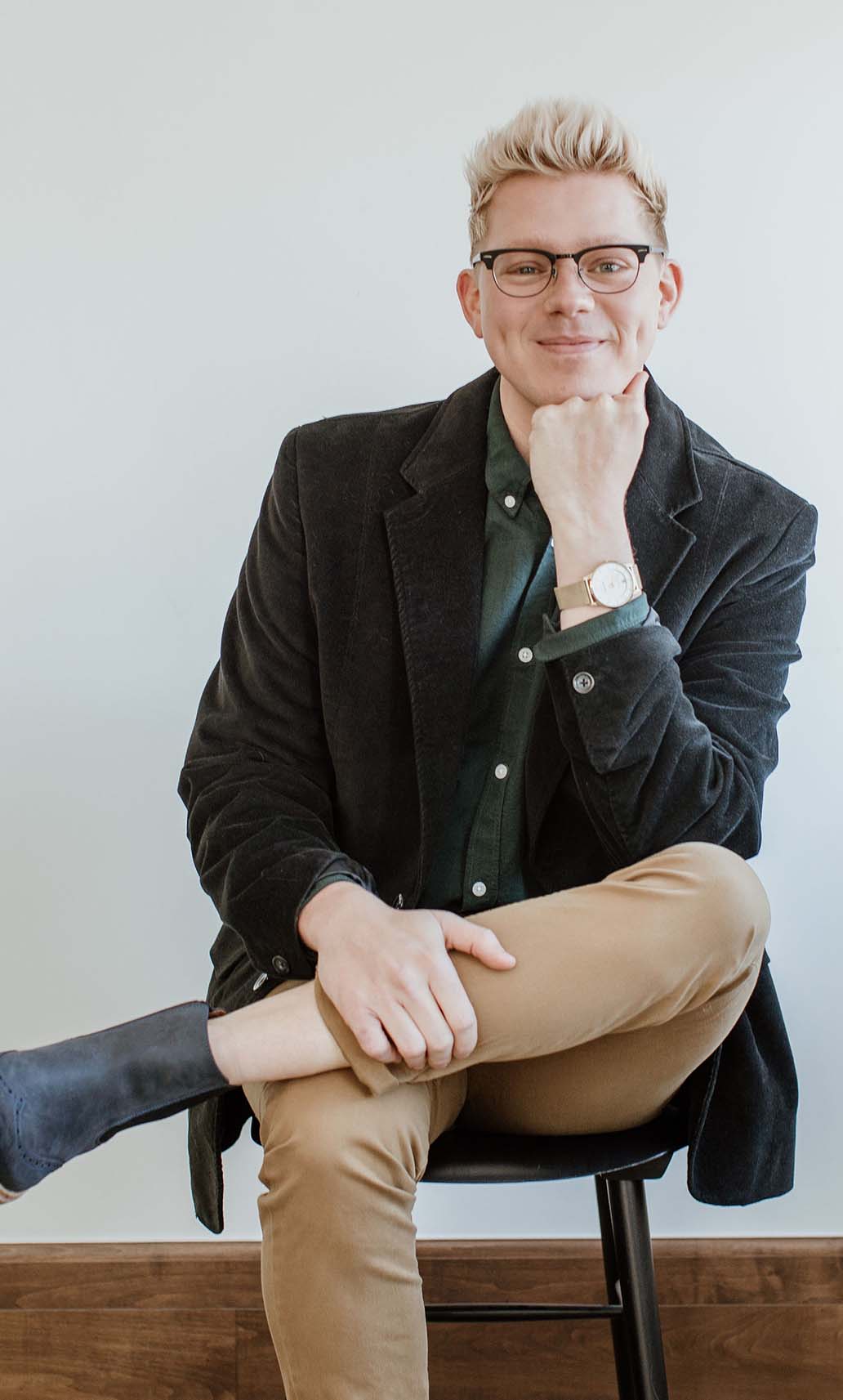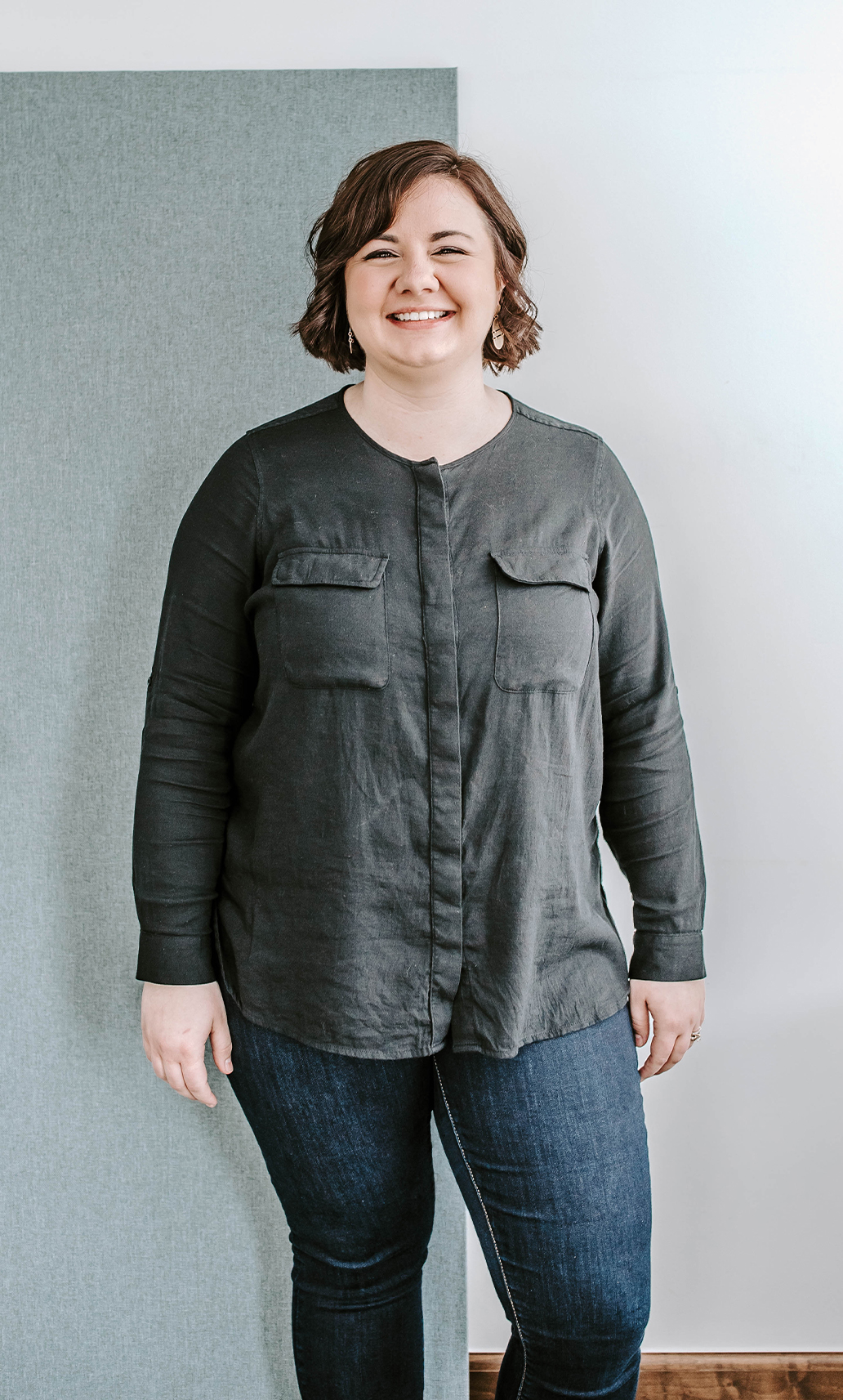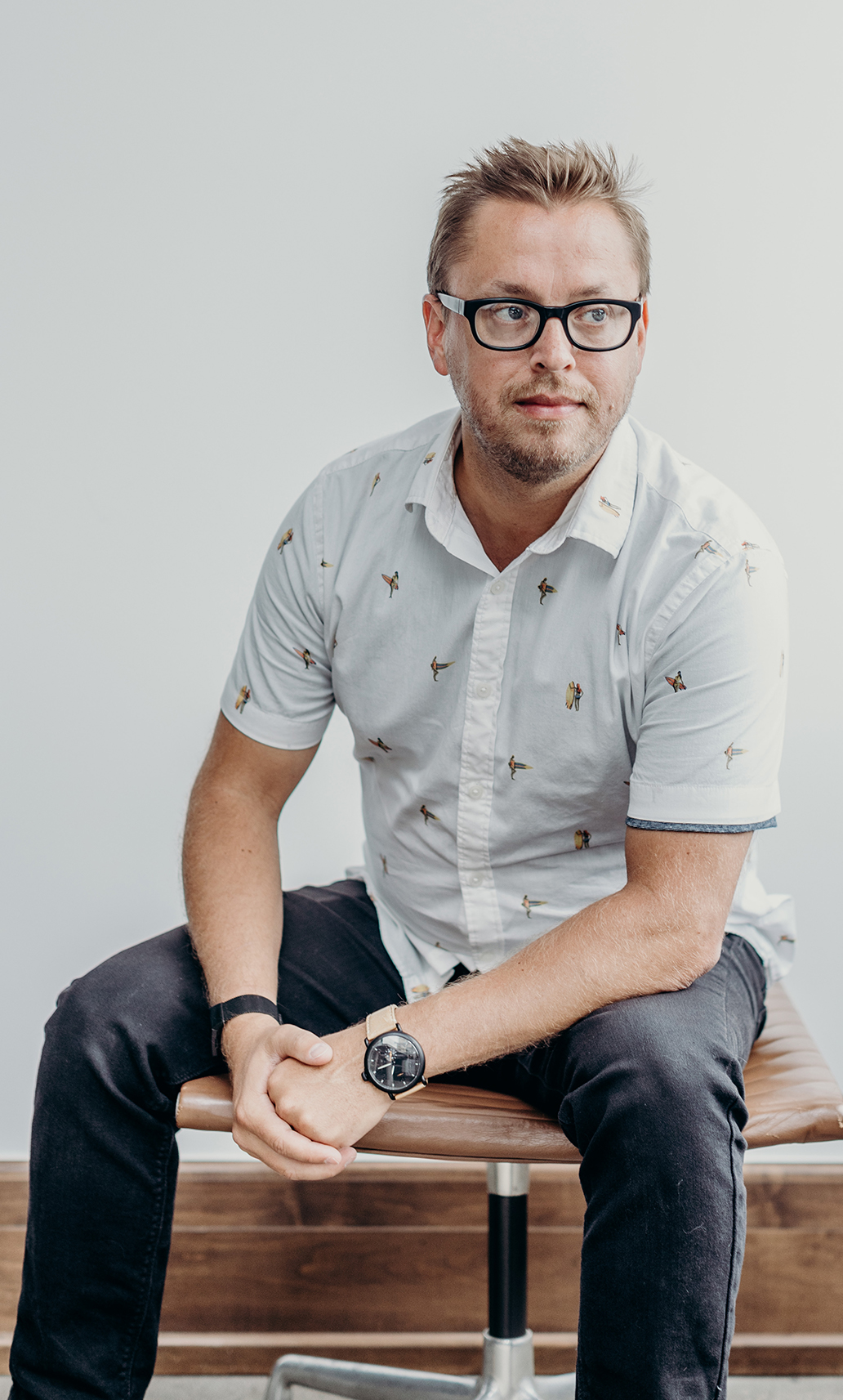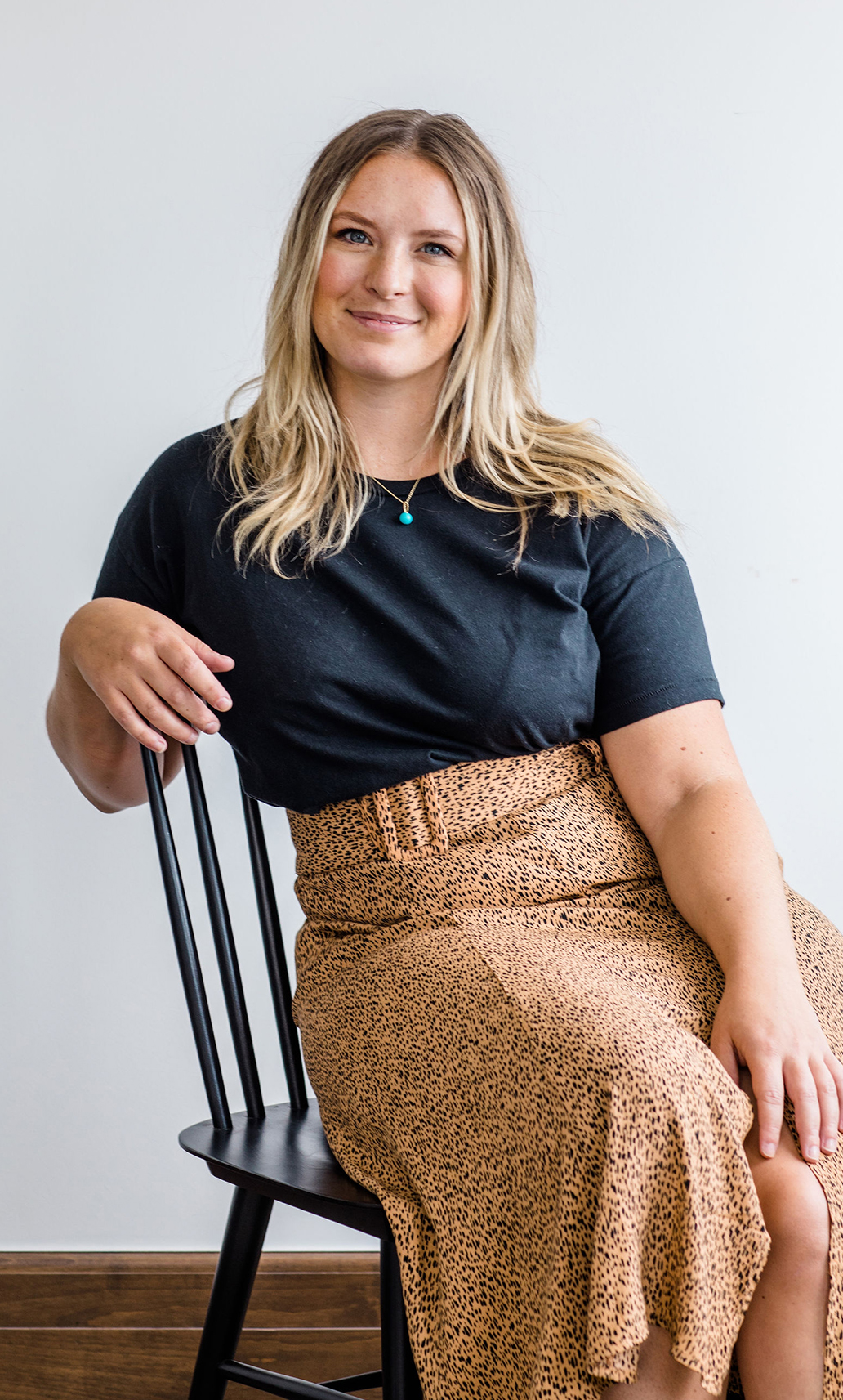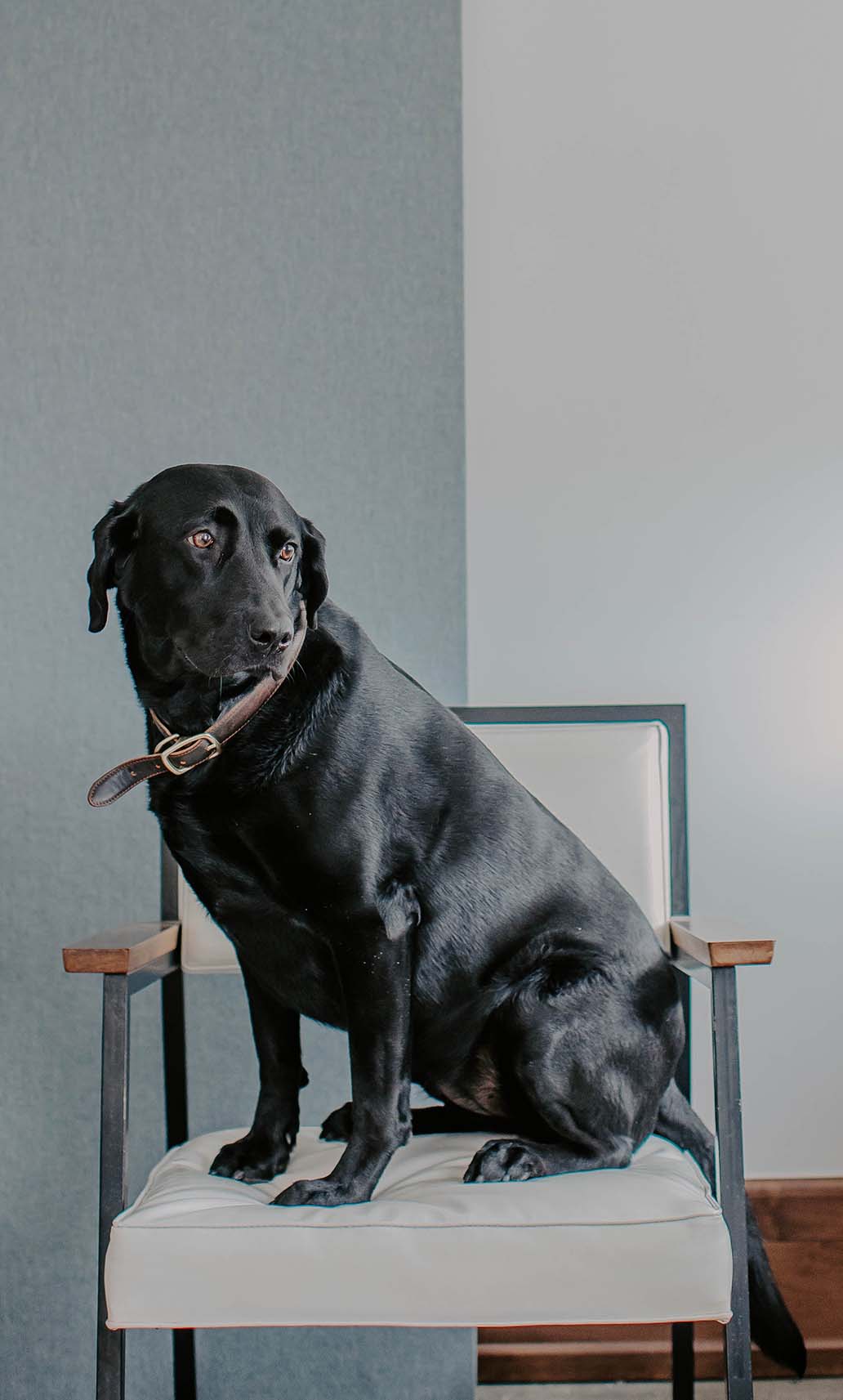Future Hospitality
podcast
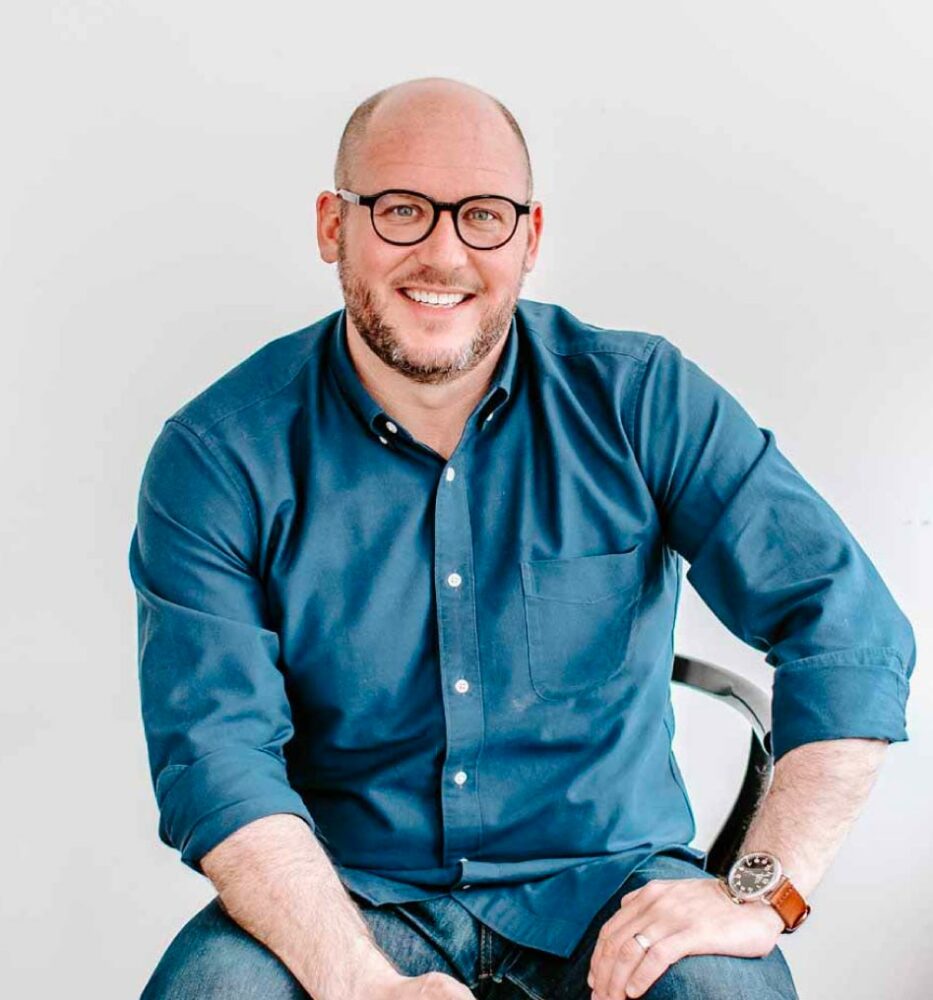
#20: Impacting People’s Lives Through Well-Designed Spaces: Patrick Thompson
February 9, 2021
Dustin Myers: Patrick, thank you so much for joining us.
Patrick Thompson: Thank you for having me.
Dustin Myers: We’re excited to get to chat with you today. Just seeing some of the work in your portfolio, the more we’ve gotten to know you, just some really cool projects, and it seems like a really, really cool team doing stuff out of Detroit. So maybe for our listeners, just kind of give us a little bit of background on how you got to where you are and a little bit more about your team.
The Beginning
Patrick Thompson: Sure. Well, I want to say thank you guys for the opportunity. When you first reached out, I was excited. And then when I dug in and saw kind of what you guys do inside your portfolio, I was even more excited because it’s always very nice to talk to fellow creatives, especially fellow creatives that are business owners, because I think we have a lot of similarities and a lot of things that are crossover. So yeah, PTD, Patrick Thompson Design, 2009 is when I decided to start the company, always grew up in a very creative family with artistic parents and woodworking father, material, culture junkie, antique addicts, museum curator, mother, and just really always had a very appreciation, a strong appreciation for craftsmanship and the built environment and kind of material culture from a very young age.
“[I] knew that I had landed where I wanted to be.”
I had gone to school for historic preservation and then I landed back in Chicago and went back to school for interior design, was very fortunate to work for a great design firm in Chicago when they had just started, it was Simeone Deary Design Group. They’re now a pretty big hospitality design firm. They’re out of Chicago, but they’re doing stuff on a national level. They’re a pretty large firm, but it was a female-owned business, ran by two women. They were just phenomenal to work for. It really kind of what cemented my idea and kind of my comfort in this industry and knew that I had landed where I wanted to be. I was there for about five years in Detroit. Detroit was calling. It was always my home and I knew I would return at some point. I just wasn’t sure when. I think I came back in 2006, 2007-ish, and came back right in the middle of the recession. And there weren’t many job opportunities.
So I started PTD. I didn’t have any other options and I figured this would be something to supplement side jobs. I was doing some gig as a carpenter. I decided to give this a whirl, but I decided to take it real serious. At the same time, I helped a friend barter by helping her design her store, in trade she designed my logo. I helped a friend do some work at his house. He photographed my own personal loft that I had bought my parents’ basement that I had just kind of like faked my way through. When I was a carpenter years ago, I had done their basement, but then I borrowed furniture and styled it and had it photographed. And I came up with this makeshift website that looked a lot more professional than it really was. It was great and none of these were paid projects, but people didn’t know that.
Yeah. And I think 2009 is when I got my first real commission to do, it wasn’t a friend at the time, it was a great friend now, but they hired me to do his kitchen. Because of my carpentry background and construction background, I decided to GC it and design it. And it’s still on the PTD site today. And it was one of my first projects and it was just me at the time, but I think one of the most important projects. It taught me kind of about clients, how to work with clients, but it also taught me that I didn’t want to be a GC. That’s for sure. Yeah, and now here we are. We’re a 10-person firm based in the City of Detroit. I always wanted to be in the city and we’re doing work all over the State of Michigan and some stuff out of the state, but primarily hospitality design firm, about 60% of our business is hospitality and then we still do a good amount of high-end residential, some corporate interior, some retail, but primarily hospitality, hotels, and restaurants.
Jeremy Wells: That’s really neat to hear that journey. As you went through those formative years of your career and kind of learning the ropes and then kind of diving into venturing out on your own and then doing these initial projects, what was the path from starting in just like these residential designs and things like that and then moving into larger-scale hospitality projects? And what did that path look like? And then also, what is it about hospitality projects that you enjoy or that interests you the most? That’s a large piece of you guys’ work and portfolio that you do. You said it’s 60%, but what is it about hospitality that you really enjoy from a design standpoint?
“We have the ability to impact and improve the lives of people through space”
Patrick Thompson: I guess for me and kind of the message that I put out there for the office and for clients too is I think hospitality design, it’s kind of a given for everything, whether it’s an office or a home or a restaurant and really we have the ability to, I guess, impact and improve the lives of people through space. It’s really like a huge honor. I feel like it’s an honor to be able to use what I think is the talent that I’ve been given to serve others. That’s always been my thought behind.
I was raised in this house where it’s like, if you do what you love and you do it for the right reasons, whatever’s supposed to happen is going to happen. Whether it’s supposed to bring you the ability to have a career, that’s just what’s always drawn me to design is really I love people. I love people. I love being social. I love things. I love collecting things. Everything from pens to chairs, to artifacts, to clothes, the bags, to watches, jewelry, everything. I love the collection of things. I love seeing people’s collections. I love hearing the story where things come and I love like seeing the culmination of how things can be brought together and then really like problem solving. I’m this person who thinks he can always help everyone, even when they don’t always want help.
So really hospitality design gives me the opportunity to bring all those things together. What could be better than to create a space where people can come together, eat, sleep, play, and they feel special, they feel they have this warmth around them? And me and my team can create that moment and time for them. So that’s always been the driving force behind why I do what I do. And really to go back to your question, I never wanted to do, I don’t know about it. Residential is a different beast because it’s even more intimate. Right? You’re in people’s homes, you’re in people’s closets, you’re in people’s bathrooms and their kitchens, but that’s even more of an honor. You’re asking me to help you design this thing that you touch every single day or sit in every single day or sit underneath and the lights got to feel right when you sit and read a book to your child.
So I never really looked at it. I’ve always said like the design process for you, whether you’re doing a home or a restaurant or a piece of furniture, we do follow the same process. So for me, the jump was like, what I told you before, like I decided to commit to my business hardcore with the website, I joined IIDA. I got on the board of it. I passed the NCIDQ, all these certifications, which I think were more for me to raise my confidence, to have the confidence to do this, but then also I decided to get out of my home office. I joined a small business incubator space in Detroit. And the people that set that up, they gave me, it was called the DC3, the Detroit Creative Corridor Center, and like an ad agency had come to them and said, “Hey, we’re coming to Detroit. We need to find some space.” And the person who started that incubator said, “Well, here’s a landlord. Here’s a building that you might want to look at.” But also, “Here’s a young designer who just started his business that I think could be a good fit.”
So it was like between 2009 and 2011, I was doing some residential stuff, but I didn’t turn down anything. I was always raised in a household. My dad’s the same way. He would say, “Yeah, yeah, I can do it.” And then he’d go home and go, “Oh, shit. I got to figure out how I’m going to do this.” And that’s the same way I built the business, which I wish I could tell you that it was like hours of spreadsheets and business plans, but it went well.
Dustin Myers: Yeah. I think that’s the story for a lot of people, especially in the creative side is it’s not uncommon to hear that I started this business because I was afraid that nobody would hire me, which is kind of how I started, and just seeing that evolution and progression of like doing what you love. I love the ethos behind, kind of your mindset and just do what you love, do it for the right reasons and what’s going to happen is going to happen.
“You can worry yourself out of doing anything.”
Patrick Thompson: Yeah. I try to live my life that way. I really do because it’s so easy to… I mean, you can worry yourself out of doing anything. Anyone can. When I was at that firm in Chicago, I loved the women that I worked for, but our design aesthetics were not aligned. And I remember being like an intern there my first year and being really pissed off at the things I was selecting, weren’t making it into projects. They were kind of like, “Dude, you’re still in school. You’ve been here for nine months. It doesn’t work like that.” And I didn’t think I’d have my own firm. I knew that I would want to be a creative director at a firm because I always thought that, like, I have a really nice way of getting information out of people, which is how I view problem-solving for what they want for their home, their restaurant, and their workplace.
I don’t know. I just think I have an empathy for like an empathetic way of listening to people and then kind of showing them here’s what I heard. And generally, it seems to be very well received.
Dustin Myers: Yeah. That’s definitely an art form and extremely valuable for those who are good at it. I’m curious how you approach different projects. As a team, do you guys have like a set formula that you follow each time going into something new or does each one require its own process? How would you describe how you approach projects?
Patrick Thompson: Yeah. So it’s funny that you say that because I just recently hired a business coach to help us kind of put together some metrics to measure milestones and successes. And one of the big questions was, “In design, how do we measure the quality of the work? Or if it’s a presentation, how do you do that?” So he asked me to put together and kind of write down the process and what I want and how I think it should go. And this was just like a big brain dump for me. It made me realize that we do have a process, and I’m not sure that I’ve always done the best job of making sure. There’s a few key people that have been with me for like years and they’re a bit of kind of crazy Patrick mind readers, so they know.
But I would say, to go back to your question, yes, there’s very much a process. At the beginning, information gathering and research of whether it’s a building, whether it’s a home, whether it’s a space, like to go through some basics, like, “When was it built? Who lived here? Who occupied it? Why was it built? What were its uses?” For me, I know it’s a bit cliché to talk about storytelling and the narrative, but really it’s not. That was the cool thing about that firm in Chicago. I mean, should I still talk about it? And I worked there 15 years ago, 16 years ago. And the concept design, we do a pretty heavy concept when we pitch to a client and that’s our most important process because that’s probably where I have the most skin in the game. That’s after I’ve met the client.
After I’ve seen the space, I came back to the office. We have as-built drawings. We sit down and we say, “okay, where are the opportunities? What did you hear? What do you think of these people? Look at these different resources they gave us. Here are some resources. This made me think of this.” So it’s this giant brain dump in kind of our design concept kickoff charrette. And that’s where I guess the special sauce comes out. And I have to be part of that because it’s too important for me not to be part of it because I’m generally the person who I step away with a lot of the technical stuff because I’m doing other things, but when I’m explaining to a client why they should do this, I have to really believe it. I can’t like sell bullshit.
“We follow the traditional phases, but in our office, there’s a lot of freedom for people to go off on their own”
And so that concept is super, super important. So that’s where everything really happens. And we have the big ideas and there’s some trial and error. Sure. But once we get it, we get it. We present it to the client. We’re not like an option one, option two, option three firm. We’re not. We have all those in the folder under the table or on the chair. So if the client reacts to something, then we can pull something out and say, “Yeah, well, we looked at that too. Here’s what we think.” But we usually lead with the big idea and kind of our solution early on and concept is really just materials, plans, big ideas, sketches. And then that gives the client something to react to.
And then if they like it, it becomes kind of our Bible for the project. Because as designers, you guys know, you can start here by the time the project gets done. Yeah. It’s like, “Oh my God! How did we end up here?” We pulled that concept out throughout, like at schematic, FDD, even during construction documentation, even like at the end with artwork curation, like we keep pulling out concepts so we can say, “Okay, the client approved this. This was our vision at the beginning. Are we still on track?” And you know what? I can almost pull up most of our completed portfolio work and then look at our conceptual direction, I bet you can see. I haven’t done that in a while. I used to do all the time, but you can still see that it’s still very much in line with where we started.
So I think that’s a long answer to your question. But yeah, we follow the traditional phases, but in our office, there’s a lot of freedom for people to go off on their own. But I usually have check-in points, specifically with me, before they go too far, just to make sure that I still feel like it’s what I heard at that initial meeting.
Dustin Myers: That’s really cool. And just hearing you describe that process, I can see a lot of parallels with kind of how you approach things from a branding standpoint and making sure that there’s a clear vision at the outset, which kind of helps decision making throughout the entire process, making sure that you’re supporting the greater strategy and not just going off on tangents and getting off track.
Patrick Thompson: Or just doing stuff because it’s cool. Yeah, you want it to be cool. We want it to be creative. We want it to be beautiful. But obviously, it’s got a function, but it’s not for us. It’s for them. Right? And so that’s why I think that, I guess, I kind of pride our interview process on being fairly informal, but it’s actually extremely thought through. It’s no different than what you’re doing with me right now. You’re asking me questions that some of this stuff I don’t take the time to think about, but I definitely have answers to.
Dustin Myers: Exactly. That’s really cool.
Why Detriot?
Jeremy Wells: Patrick, just looking at your website and your portfolio work and seeing the clients you’ve worked with and beginning to hear some of those stories and whatnot, it’s really inspiring. First of all, your work is like beautiful and awesome. And you mentioned like traveling to visit sites and how your team kind of approaches the process. You dove in a little bit to that. I’m just kind of curious too. You’re based in Detroit. Your team is based there. I guess kind of twofold. Why Detroit? What kind of led you there and what brought you there and what do you love about that city? And then two, how has like the travel related to projects and being able to do site tours and things like that, how has that been impacted, especially over the last 12 months for your team and what sort of changes have you had to make there?
“The city has so much to offer in terms of its architecture and its music and its beauty.”
Patrick Thompson: So the why Detroit part is fairly, I was born here, so I inherited it. I’ve been pretty fortunate. My mom was from the East Coast, but my dad was from here. So I always got a chance to travel to other places, not a crazy amount of travel at a young age, but not until I got like in my teens. So I knew I wanted to come back here because there’s something, one, my family was here. The funny part is I came back and now my parents live in Massachusetts. My brother lives in LA and I’m now here with a family, with a family of like young kids. And I have no family here at all, which is hilarious. That turned out that way. But I was in Chicago and I loved it. It was an awesome city and tons of just amazing things to be inspired by and stuff. But I was reading all this stuff happening here. I felt like it was an opportunity to be a part of something to help like make a splash for my name, for myself, but at the same time like do things that really do make a difference in people’s lives. And the city has so much to offer in terms of its architecture and its music and its beauty. But in a lot of ways, the people here always have been what is so special.
And you ask anyone about that. You ask anyone who’s lived in New York and came to Detroit. So people here welcome out of towners for the most part with open arms. And it’s got a very, very much a can-do attitude, roll up your sleeves, and go for it and people really, really want to help. And I experienced that right away when I came back. Every time when I was doing something, you know what I told you about with my original when I started my company. People’s willingness to help and to recommend and to refer. It was just like nothing I’d ever experienced before and it still exists. I mean, it’s still very much that kind of town where people want a success story. They want that in Detroit and they want to be a part of it. They want to help. And it’s just a really friendly place to be.
And for the most part, it’s always been a design town with the automobile and stuff, but at the same time, it was like this Rust Belt town where it had this grittiness to it. And I saw that there was an opportunity to kind of take that to polish the grid a little bit and do beautiful spaces, but still honor who we are and where we came from. You got to start with the history, and then the people, they kind of buy what you’re selling when there’s truth and heart behind it. And that’s just very much how this town is. We’ve got a great airport.
Southeastern Michigan is huge. Detroit itself is only like 700,000 people, but Southeastern Michigan is like over three million people. So it’s a pretty big metropolitan area. It’s spread out. It couldn’t be more a better case study for sprawl. It’s similar to like Los Angeles in some ways, like the downtown, but then all of like the little neighborhoods in the pockets, in the boroughs that are technically Metro Detroit, but they’re all. Here, you’re still in Detroit. I mean, people that live in the city limits would punch me if they heard me say that.
Jeremy Wells: That is pretty interesting. As you’re mentioning that, like how you’ve kind of tried to even bring a little bit of that grittiness to your team and the designs you guys are doing, like, as I’m looking through your portfolio, even right now, as we’re talking, like, I can see that coming through in a lot of the designs, that’s really, really good. I’m always just curious. The reason I asked about Detroit, you could probably be anywhere, and I’m always interested to hear why people land where they’re at. We had Zach Kupperman on a couple of few podcasts ago and he’s in the New Orleans area and just loves that city. It’s kind of cool to hear how people either come back to their roots or migrate and kind of go to a new area and wants to make an impact in that area. So I think that’s really neat to hear.
“It’s not always about the amount of money they make doing it. And those are the kinds of people you want to partner with.”
Patrick Thompson: Yeah, New Orleans and Detroit have a lot of the similar struggles. I don’t know. There’s just something about the people here. Here, it’s a very special place to do something in your own backyard. It’s very special. And the craftsmanship here is ridiculous. The amount of artists. And here, it’s affordable to do some of the things that you want to do, like even project-wise. You need some something fabricated or you need something made custom, there’s someone who is starting a new business that has that same kind of idea that you do and that I do, that wants to do whatever it takes because they want to like get their shit out there and they want to make something. And it’s not always about the amount of money they make doing it. And those are the kinds of people you want to partner with. You want people to be able to put food on their table, but at the same time, it’s a really nice collective of people, craftsmanship, craftsmen, and artists, and makers that just want to make stuff and think it’s so cool to be.
It’s always been like that here, but now I think it’s even elevated even more. It’s beyond only making things out of found objects. Now things are much more sophisticated and even some of these new restaurants and hotels that you’re seeing and stuff here, all of these same guys and women that were making stuff before, they’re doing it now. It’s kind of like their hard work and doing stuff as favors. It’s paying off now.
COVID
Dustin Myers: Yeah, absolutely. Kind of shifting gears a little bit. So we’re all aware of what’s going on in the last year. I’m always curious to talk to designers and what they think is going to change or maybe what you have changed as far as how you’re designing spaces. If any of the pandemic has caused you to rethink or pivot, I think designers in a way kind of shape culture and shape human behavior. So I’m just curious your thoughts on that topic.
Patrick Thompson: The big what now, COVID.
Jeremy Wells: You knew it was coming?
Patrick Thompson: Yeah. So it’s funny, at the beginning, back in February, March of last year, everyone was kind of in denial. A lot of the clients were in denial about it. Right? The risk-takers are willing to still keep moving forward. I think now they’re seeing a little bit of a different song and stuff. Before, it’s, “Hey, here’s the floor plan, here’s the layout. We’ve split your tables up into groups of four, it was six feet distance and things like this.” I’d say, we’re noticing like people’s desire to pack as many people and obviously is changing. Right?
So we haven’t done a ton of like COVID plans. I think that in hospitality, in restaurant design, I think there is a certain amount of flexibility that always goes into it anyway because for the ability for private parties or people for a two-top or for large groups. So I think what we do generally is pretty flexible already. But I do agree with you, designers have the ability to kind of like shape culture in the way we react to things becomes essentially kind of right to say the new normal. So on our end, we’re I guess we already were doing that. We’re seeing less seats in restaurants and we’re seeing groupings that are a little bit. I think in hospitality spaces, hotel lobbies, and stuff like that, you already were seeing things shift because of the way people are going out into smaller intimate groups anyway. So a lot of that we were doing and we’re just giving a little bit more negative space. Obviously, your takeout windows, your carry-out, your curbside, that’s all coming up now. And instead of being so reactionary, we’re seeing it already get designed into the plans. We’re bringing that up because a lot of that stuff is going to stay. And whether it’s because of people’s fear of going out or people have just realized how convenient it is to pull up and have craft cocktails and a beautiful dinner just brought to their car.
“You’ll see that a lot of these businesses that have managed to weather the storm here are going to be the ones that are going to come out on the end just because they were so creative with how they still made it all about the people.”
You’ll see that a lot of these businesses that have managed to weather the storm here are going to be the ones that are going to come out on the end just because they were so creative with how they still made it all about the people. I was reading this article and it was the CEO of Herman Miller. And she said, “You have some big firms,” she was talking about workplace, the big firms are saying, kind of in denial, “We’re going back just the way we were.” And then you have like, the dot coms or like the Silicon Valley that are like, “What do we need offices for? We’re never going back.” It’s going to be somewhere in the middle. And one of the interesting things that she had said was probably what people are going to do in restaurants and hotels, and I don’t know what it is yet, and I don’t know if anyone knows yet, and workplace is while people were gone, there’s going to be all this information and data collected to say, “What did people miss the most?” And that’s what designers are going to be designing for. What people miss the most when they couldn’t have their normal creature comforts? Did I answer your question at all?
Dustin Myers: Yeah, that’s a really good way to look at it.
Caring for People
Patrick Thompson: Yeah. I mean, just caring for people. That’s been the big thing, yeah, I mean, for restaurants, for hotels, for workplace. I think a lot of ways, this time a lot of people who have shown their true colors in terms of like our people first and people that are in businesses and employers that are putting their people first. I think that those are going to be the ones that are going to have the recipe for success and really understand like what that outcome is going to be and have that sensitivity to what is going to need to happen to work because people are going to still want to go out. I mean, people are going to still want to go to dinner because I was asking in the office today. I was like asking a few people, “What do you miss the most?” Heather, she was saying, “Well, I think for me, it’s the people that I go out to dinner with.” And I was saying, “For me, it’s walking in and seeing whether it’s a bartender or server or someone who’s a complete stranger and sharing a moment and then leaving and saying goodnight to someone.” And even if it’s those two moments, like that’s what I miss the most is like the interaction with strangers.
“Most people are craving just human connection.”
So it’s going to be really interesting to see how that’s going to… because I still think we’re going to need both. I know everyone’s saying it’s going to be all technology, everything’s on your app, but even your younger generation, most people are craving just human connection. So I think it will be more planned, I think that there will be more planning to go out to dinner. There’ll be less just popping in somewhere. It’s going to be more planned events. But I still think that you’re going to get a lot of that same connection that people are really craving.
Jeremy Wells: Yeah. Yeah. I definitely agree with that. As you look over the last year since you started PTD back in 2009. What you’ve built over the years, not only in just the designs you’ve been a part of and the projects you’ve been a part of and the cool things you’ve made, what would you say is something that you’re just most proud of when kind of looking over the last now I guess it’s been about 12 years or so? What would you say you’re most proud of, you and your team?
What are you most proud of?
Patrick Thompson: So I was thinking about that. Honestly, I would say it’s the team. The way that we all work together and we’re just a family and I really, I really, really mean that. That is what I am by far the most proud of. Managing people is very, very challenging, and learning how to empower these people and these remarkable people and let them kind of bring ideas to the table, I’m just very, very proud of how well we all work together, especially in this past year. It’s really, really brought out. A lot of interesting things in all of us in terms of personality types and strengths and weaknesses and we’ve learned a lot about each other and it’s easily I’m most proud of the team.
“I’m just very, very proud of how well we all work together”
There’s one person who’s been here for eight years or maybe seven years, another one for four or five. I mean, everyone else is about four or five with a couple of like one to two years in there. I’m always happy for someone that wants to move on as well. But for the most part, our core team has been our core team and it’s just remarkable how well we work together and kind of read each other’s minds. It’s really nice and comforting to do it with them and had to be this family.
Dustin Myers: That’s really awesome. I’m curious, just seeing your work and seeing the final outputs, I know it’s not easy for a project to start out in the right direction, stay on the right direction, actually be completed with the vision in mind when you get all the different aspects involved, all the different stakeholders, decision makers, all the different vendors and everything that’s involved. What have you learned over the years? Or maybe what has been a success or failure in keeping that vision all the way through to the execution, to the final product?
Patrick Thompson: I think one of the biggest successes has been learning. There’s some design firms out there that have the ability and maybe they have the budgets or the clients that allow them to not, and maybe I’m wrong, but to not budge on anything. That’s always the secret, right? Knowing what to fight for them when to let go and learning how to really not be an obstacle on the project, but still keeping your sense of respect. Contractors want to throw people under the bus to owners. You guys probably understand. It can be a really tumultuous relationship at times and that can be stressful. You can take that stuff personally, but I think like some of the biggest successes is really realizing that we all are trying to get to the same spot. Everyone might have a really different way about getting there, but being understanding of people and maybe not always assuming the worst and giving people the benefit of the doubt when you can.
That’s easy for me to say on this call, like fast forward to a week from now, when we’re fighting with a contractor on like a bar counter detail or a light fixture where someone just made a decision to order something. It’s hard to measure it, if it’s a success or failure, but there’s been plenty of those where there’s some where it’s like, “Okay, I’m glad that we kind of let the hair on the back of our necks go down and go in with a different approach than to go in there, guns blazing. Right? Maybe that’s a weird example, but it’s very much part of what we do is we are managing and working with a lot of different relationships and personality types that we didn’t always choose. We inherit a lot of them and we really represent, it’s not about us, we represent it with the client and like the owner’s best interest, I mean, I would say at all costs. And when we see someone that’s trying to like mess with that or do something that’s going to mess with the design integrity, I probably taken a lot more personal than I should. So learning to manage that has been something that I’m proud of. In the past few years, it’s definitely something that I’ve gotten a lot better at. The way to do it really is just by setting expectations early in the project.
What’s on the horizon?
Jeremy Wells: Yep. And your work and everything that we’ve talked about is definitely a testament to how you’ve shaped and molded that over the years. So great stuff. And the conversation we’ve had has been awesome. As we kind of come to a close here towards the end of the conversation, we always like to ask, what is exciting to you about the future of this industry, how you’re involved in the industry? What are some exciting new things on the horizon for your team? Or just in general, what about the future is on your mind and excites you?
Patrick Thompson: I’m going to bring it back to the COVID thing because a year ago I was flying with a friend to London to go see Badly Drawn Boy, one of like our favorite musicians. We flew to London for like 48 hours or something and then I would probably come back on a Tuesday and try to make a client dinner on like a Wednesday night. And this has forced me and I think a lot of people to slow down and I’m really excited to see what is on the other side of this. I’ve spent more time with my family and more time with my son and my daughter in the past year than I probably would have. And it’s been really, really nice. And I’m looking forward to more of a balanced life for all of us and like the ability to like maybe slow down and appreciate things.
It just seems like we’ve all had to learn to be a lot more patient and patience is something that it can be taught and it can be learned. And a lot of times, usually you’re forced to learn to be patient. I think a lot of us have. And I guess I’m looking forward to what that’s going to be like. And I think that design is going to be a big part of that with the way that we stay in hotels and the way that we check in and the way that we order our food and the way that we get together with friends. I think that we will all have to just be a lot more patient and balanced and intentional with our choices. I’m looking forward to that for myself. And I think for everyone.
Dustin Myers: Well said. I could sit here and talk to you all day, but we will wrap it up for the episode’s sake. How could people find out more about you guys?
Patrick Thompson: So yeah. If you just go to our website, which is patrickthompsondesign.com and I’m pretty sure there’s some cool videos on there, kind of what a day in the life that PTD’s office is like, and then we have a newsletter. Obviously, we’re on Instagram and Facebook. Yeah, follow us there. Instagram is probably the most up-to-date usually, but we’re pretty good about keeping up our website up to date and we’re sending newsletters monthly. So check us out there and you can always shoot me a note that way. Okay?
Dustin Myers: Excellent. Thank you so much for taking the time and keep up the good work. We’re excited to see what you guys do.
Patrick Thompson: Well, thank you for the time. I appreciate the opportunity.
